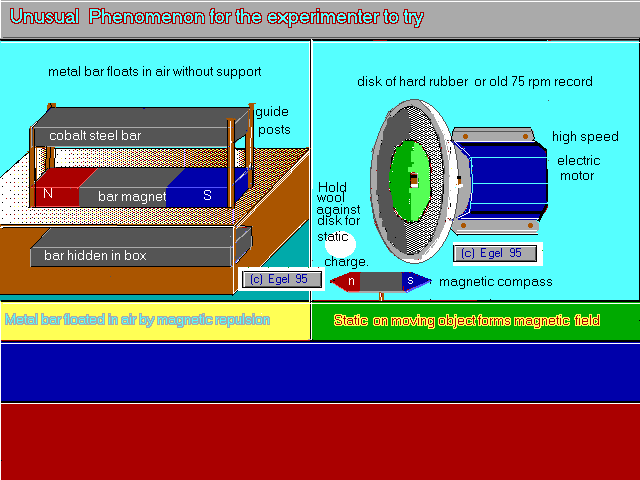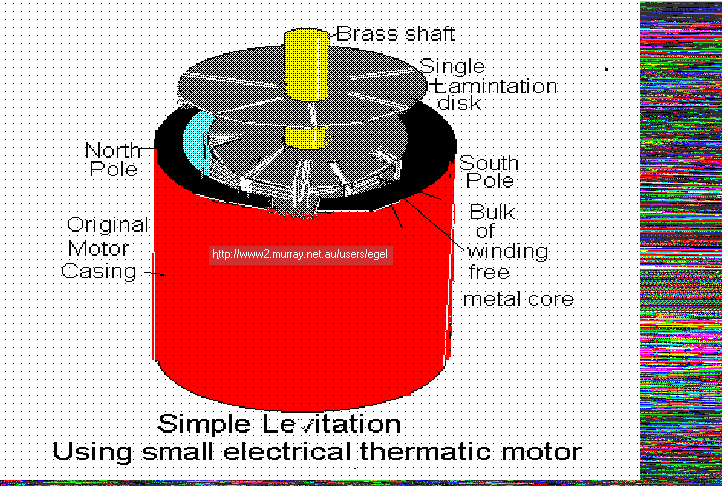

The floating iron bar. I came across this in an experimenters book. Not really an energy device but interesting and maybe it will teach something to us about magnetic fields. Just the same I am assuming that readers are familiar with the notion of two magnets with the same poles facing each other, tend to repel each other. This device is interesting in that claims it will repel and levitate an iron bar. I think it was originally made as a magic trick. to construct this device you will need the following two metal bars of the same size [cobalt steel prefered as it can be magnetised more strongly than others. A bar magnet of the same size and length a hollow wooden box. Construction Mount a metal bar in the inside of a wooden box Just above it on the top of box fix the magnet into position so that it will not move Around the magnet place some guides so that the other cobalt metal bar can float upwards but not sideways. The floating bar is actually supported by the lines of the magnet force repelling similar magnetic poles

I made something similar by accident when working on a small 12 dc motor windscreen wiper motor with permanent magnet field poles. [curved ceramic magnets]
Experiment. First remove the armature and take all wire winding off it. Remove the circular laminated armature core sections one by one. Make a new shaft out brass rod, aluminium may work as well, as long as it not influenced by a magnetic field. Fit all laminated core pieces back onto the brass shaft. They do not need to be secured tight except that they cannot drop off the bottom. They should be close together and the former wiring winding slots can be in any position. Keep one laminate core piece apart one. The two curved magnets from stator are placed round the sides of armature core and moved so that magnetic gaps on both sides are the same. The top laminated core piece should be level with top of curved magnets when placed upright with the shaft facing upwards Four inches of the shaft should be above the magnets top most position when rested flat. This part of the shaft should be a smaller diameter to allow easy movement of the remaining laminate piece up and down. or you can drill out the centre of laminated piece to the correct diameter. The bottom of the shaft should not protruded pass bottom magnet level, so the two magnet curved bottoms can rest flat on the base. Slide the last remaining laminated armature piece on to the top of shaft carefully and watch it float in the air held in place by the shaft.
Henry A. Rowland a noted American physicist of the 1940's made the unusual discovery that a moving electrostatic charged object influences a magentic compass. The experiment here consists of a disk of hard rubber or an old phonograph record connected to shaft of an electric motor. The disk is given an electrostatic charge by rubbing it with a piece of woolen cloth. The disk is then spun and a magnetic compass is bought in close to the spinning disk. The compass is deflected and the faster the spin the greater the deflection. It appears that a magnetic field is not only set up by a current moving through a wire but by a moving electrostatic field as well. If static electricity can produce a magnetic field can it also be repelled by one . Can this magnetic field be used to generate a flowing electric current
